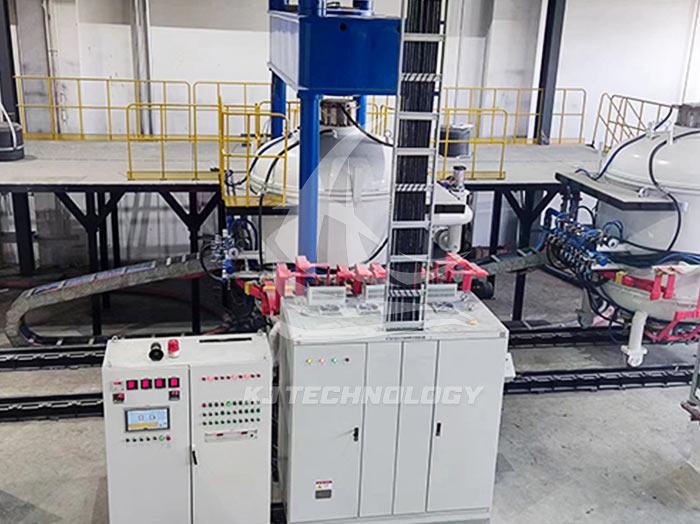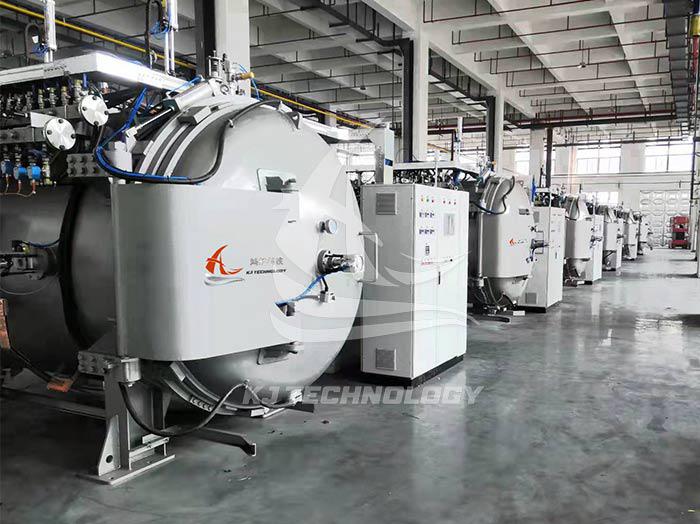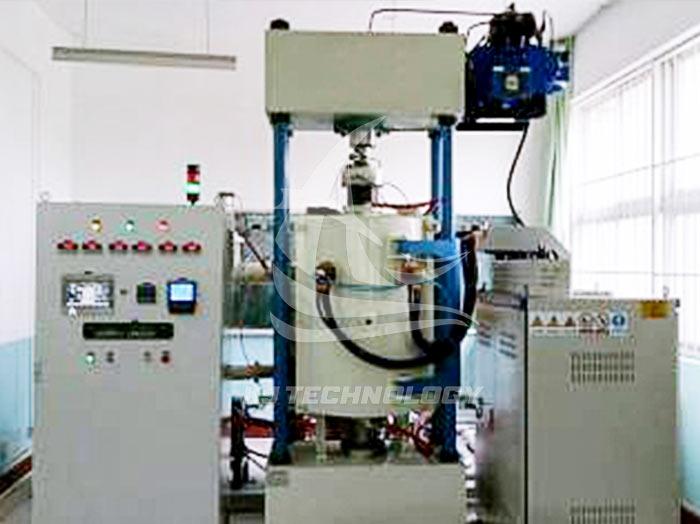Can vacuum heat treatment furnaces be used in laboratories?
 05-19-2025 Author: KJ technology
05-19-2025 Author: KJ technology
Vacuum heat treatment furnaces can be fully used in laboratories and have unique advantages in scientific research and small-scale production.
1. Laboratory application scenarios
New material research and development
Objective: To explore the microstructure evolution and performance optimization of new alloys, composite materials, nanomaterials, etc. under specific heat treatment conditions.
Case study: Investigating the phase transformation behavior of titanium alloys in a vacuum environment and developing high-strength, low-density aerospace materials.
process parameters optimization
Objective: To determine the optimal process parameters such as heating temperature, holding time, and cooling rate through small-scale experiments.
Case: Optimizing the vacuum quenching process of high-speed steel cutting tools to balance hardness and toughness.
Failure Analysis and Reverse Engineering
Objective: To simulate vacuum heat treatment of failed parts and analyze the causes of heat treatment defects such as cracks and grain abnormalities.
Case: Analyze the thermal fatigue cracks of aircraft engine blades and improve the heat treatment process.
Teaching and Training
Objective: To conduct teaching experiments for materials science and engineering majors in universities or research institutions, and visually demonstrate the principles of heat treatment.
Case: Students master the law of metal phase transition through vacuum heat treatment experiments.
2. Matching laboratory requirements
Small batch processing capability
Advantages: Laboratories usually only need to process a small amount of samples (from gram level to kilogram level), and the small and medium-sized design of vacuum heat treatment furnaces (such as 5-50L furnace chambers) fully meets the requirements.
Comparison: Industrial furnaces have a ton level processing capacity, and laboratory usage costs are too high.
High precision temperature control and vacuum degree
Technical parameters:
Temperature uniformity: ± 3-5 ℃ (industrial furnaces typically ± 5-10 ℃)
Vacuum degree: up to 10 ⁻⁴ -10 ⁻⁵ Pa (industrial furnaces are mostly 10 ⁻² -10 ⁻³ Pa)
Value: Meet the high requirements of laboratory for repeatability and accuracy of experimental results.
Flexibility and versatility
Function integration: A laboratory vacuum furnace can achieve various processes such as quenching, annealing, tempering, aging, brazing, etc., reducing equipment investment.
Convenient operation: Equipped with a touch screen control system, supporting process curve programming and storage, simplifying the experimental process.
Safety and Environmental Protection
Design features:
Double safety interlock (automatic shutdown when vacuum degree and temperature exceed the limit)
No pollution emissions (no need for chemical media)
Advantages: Compliant with laboratory safety management standards, avoiding harm to laboratory personnel and the environment.
3. Technical characteristics of laboratory vacuum heat treatment furnace
Compact design
Size: The height of the furnace body is usually between 1-2 meters, with a small footprint, making it easy to place on laboratory countertops or fume hoods.
Case: A laboratory vacuum furnace of a certain brand has a size of 600 × 500 × 1200 mm and can handle workpieces with a diameter of 200 mm and a height of 300 mm.
Rapid temperature rise and fall
Performance: The heating rate can reach 10-20 ℃/min, and the cooling rate is controlled by gas quenching or oil quenching to meet the requirements of rapid thermal cycling experiments.
Application: Simulate material performance changes under extreme working conditions.
Compatible with high vacuum and low pressure
Function: Supports two modes: high vacuum (10 ⁻⁴ Pa) and low pressure (such as argon or nitrogen atmosphere), to meet different experimental needs.
Case: Vacuum brazing experiment of titanium alloy under argon atmosphere to avoid oxidation.
Data recording and analysis
Function: Equipped with sensors such as thermocouples and infrared thermometers, real-time recording of temperature, vacuum degree, pressure and other parameters, supporting export to Excel or CSV format.
Value: Providing reliable data support for experimental reports and paper writing.
4. Laboratory selection suggestions
Clarify experimental requirements
Determine the type of material to be processed (metal/non-metal), size (maximum workpiece diameter and height), and process type (quenching/annealing, etc.).
Focus on core parameters
Temperature range (usually 1200-2200 ℃), vacuum degree, temperature control accuracy, heating rate, etc.
Consider scalability
Choose equipment that supports atmosphere control (such as argon and nitrogen), multi-stage programming, remote monitoring, and other functions to meet future experimental needs.
Budget and cost-effectiveness
The price of laboratory vacuum furnaces is usually between 100000 and 500000 yuan, and it is necessary to balance performance and cost to avoid excessive configuration.
5. Summary
Vacuum heat treatment furnaces are fully suitable for laboratory environments due to their high precision, flexibility, environmental friendliness, and safety. Whether it is scientific research exploration, process development, or teaching experiments, vacuum heat treatment furnaces can provide reliable technical support, helping laboratories achieve breakthrough results in the field of materials science.








